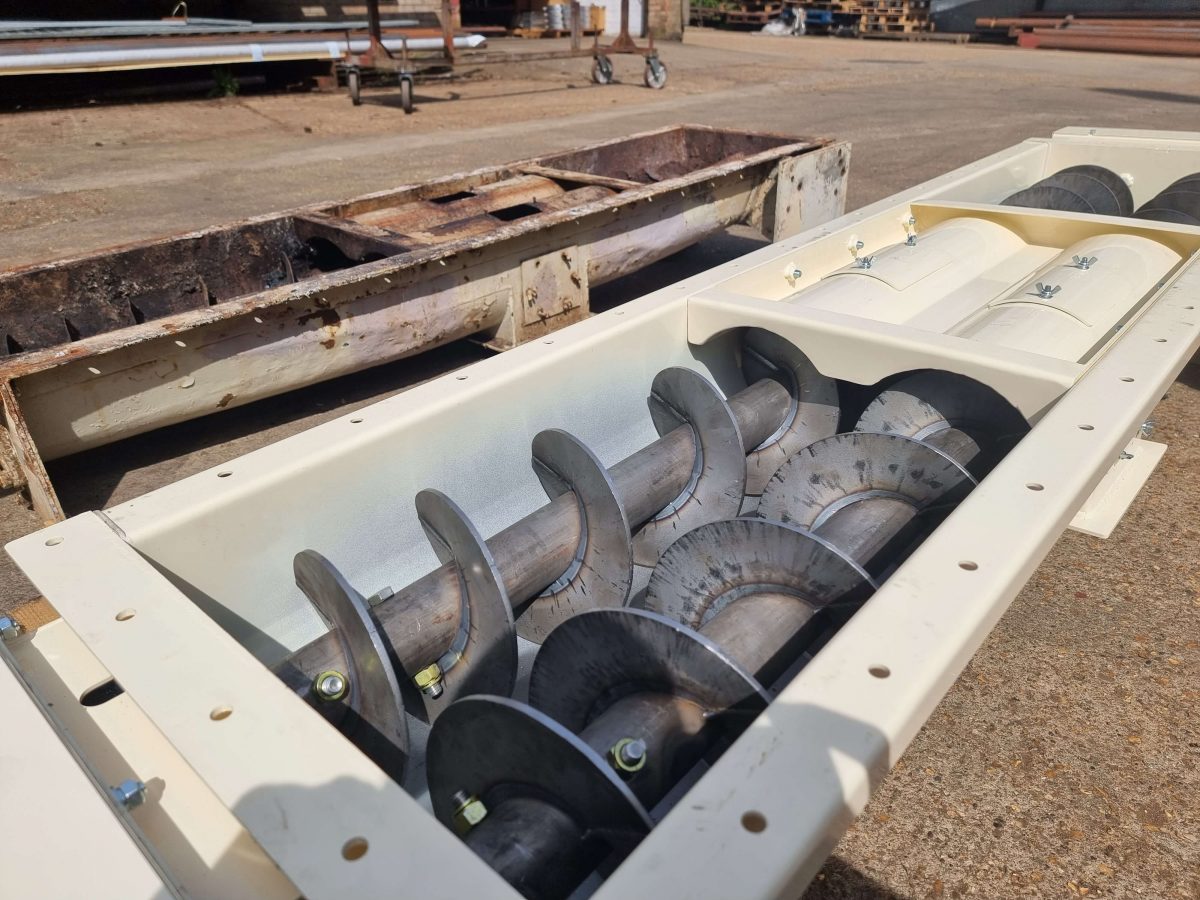Whether you’re working in food processing, meat processing, pharmaceuticals or the cosmetic industry, you need your machines to be running at peak performance. Downtime can be disastrous for any industry. If a machine malfunctions and goes out of operation, the financial losses could be incredibly damaging to business, even for as little as half an hour. Grease and grime are some of the most common causes of downtime, so industries should strive to make sure their equipment is appropriately cleaned and fully functional at all times.
More importantly, grease and grime build-ups can encourage bacterial growth. This can be hazardous to workers, customers and businesses alike.
Screw Conveyance – Typical Cleaning Methods
Screw conveyors are used in a variety of manufacturing processes. Their versatile designs make them efficient solutions for food, animal, pharmaceutical, water and mineral industries.
In today’ world, hygiene standards are ever-changing. As a result, each industry needs to ensure that its machinery is cleaned to an incredibly high standard to avoid bacterial growth and protect the health and safety of workers, customers and other businesses. This is especially important in the food industry, where hygiene standards are notoriously high, and cross-contamination and microorganism growth present considerable risks.
Despite being one of the most effective manufacturing solutions on the market, screw conveyors can be difficult to deep clean. There are two main types of screw conveyors, and the cleaning process for each type differs.
Tubular Screw Conveyor:
The casing of a tubular screw conveyor comes in a steel pipe. To deep clean a tubular conveyor, water is usually mixed with cleaning products and disinfectants and injected into the conveyor’s inlet, washing the internal tube and flushing the remaining water out of the conveyor. Ventilation cleaning can also be used: this method uses an air pump or fan to generate air inside of the tube, expelling the remaining material out of the other end. Cleaning methods can vary according to design, and sometimes, individual parts will need to be removed to be deep cleaned.
Trough Screw Conveyor:
The casing of this conveyor comes in a trough design. This makes it easier to clean than tubular conveyors, as most inner mechanics are visible and easier to reach. Trough screw conveyors are cleaned in the same ways as tubular conveyors, and some have been specifically designed to make this process easier. For example, some trough conveyors come with hinged lids and electrical safety interlocks to allow easy access for wet or dry cleaning processes.
However, many industries have realised that these processes are not efficient, and to resolve this, many now use ‘cleaning in place’ (CIP) techniques. These techniques allow for the machines to clean themselves from the inside out automatically. However, CIP techniques are not completely thorough, and there is still a risk that bacteria and debris will be left behind in the machines.
The Benefits of ‘SpeedClean’
To resolve the issues associated with CIP techniques, the ‘Speedclean’ method was devised. With Speedclean, the conveyor’s screw is designed to lift into a cleaning position. This screw lifts up at a high angle, so bearings and seals are exposed, and the screw can be lifted either manually or automatically, depending on the size and weight of the machine.
When the housing of the conveyor is opened, the screw as a whole can be tipped entirely out. This means that the bottom bin, the top bin and the screw are exposed and separated from each other, making the cleaning process more thorough and less labour intensive. After cleaning, the screw will drop back into the housing. This can be done manually; however, if the screw is large, it may be best to have a motor fitted to automate the process. This will help to avoid injury, human error and damage to the machine.
This ‘speedclean’ process isn’t just useful for cleaning; it can also be used for efficient inspection. As the parts of the screw can be lifted and removed from each other with ease, it becomes simpler to inspect smaller and more concealed parts of the conveyor.
Do you need to streamline your cleaning processes and improve the efficiency of your screw conveyors? Contact the Wrights Dowson Group, the bulk handling equipment and systems specialists today, for information and advice on your screw conveyor operations.









